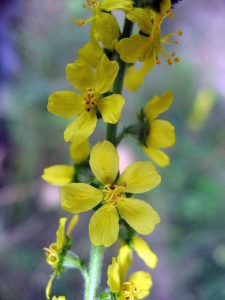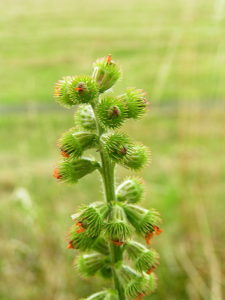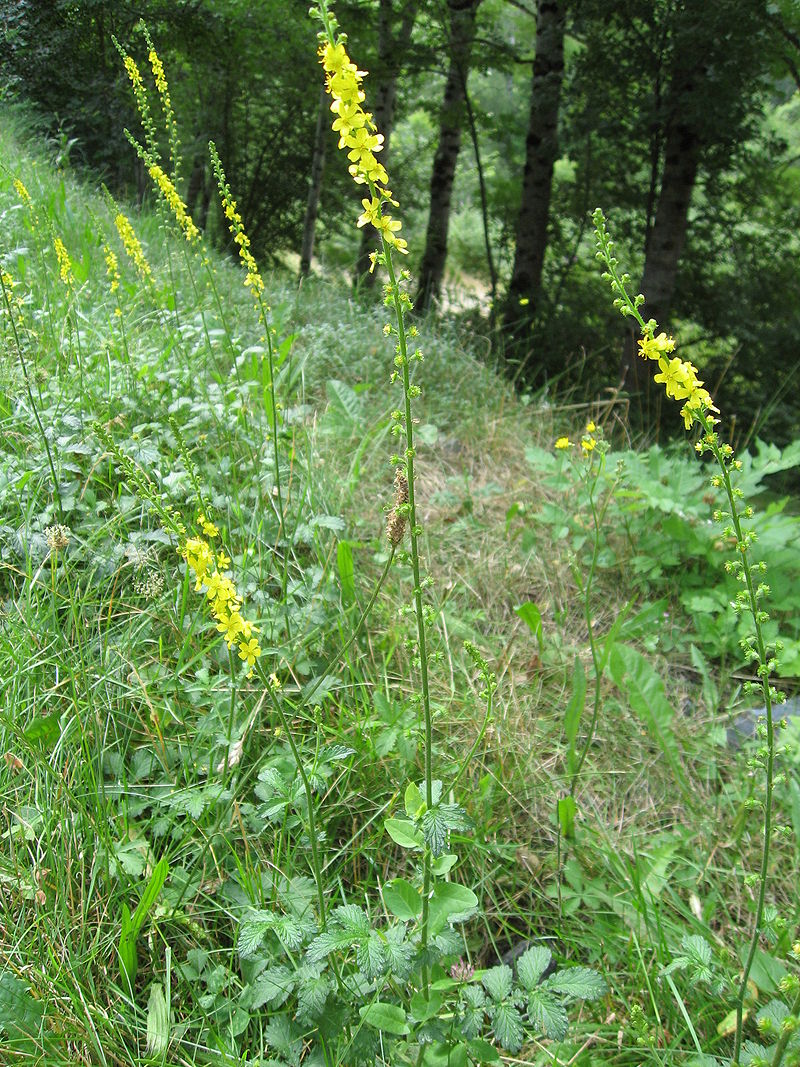
Agrimony flowers are bright yellow and grow on spikes up to 12 inches tall.
Agrimony (Agrimonia spp), a member of the rose family, is widespread throughout the northern hemisphere. A. eupatoria is the species that is most often used by herbalists and dyers. It is native to Europe. The plants were introduced in North America by European colonists.
Agrimony has a long history as a medicinal herb. There are records of its use in both ancient Greece and Rome. It was most often used as a sedative, and to treat asthma and heal wounds. Once it found a home in North America, the native peoples used it to treat fevers.
All parts of the plant can be used for dye. Combined with a mordant of alum, it yields a bright yellow.
Agrimony is hardy in zones 5 – 9. The plants reach a height of 3 feet and should be spaced 3 feet apart. They prefer full sun but will tolerate part shade. Its natural habitat are fields and woodlands. Well-drained soil is a must.
The flowers are bright yellow and grow on spikes that can be 12 inches tall. Bloom time is June through August.

Agrimony seed pods have burs to catch on the fur of passing animals.
The flowers are followed by seed pods which have an interesting adaptation to help the seeds disperse over long distances. The pods have burs on them which catch on the fur of passing animals. They are then carried to new locations where the pods open and release the seeds.
Agrimony is easy to grow from seed. You can direct sow the seeds in your garden in the fall for germination in the spring after the last frost. The seeds need a period of cold weather to germinate.
You can also start your seeds indoors 8 weeks before your last frost. They will need to be cold stratified to mimic cold winter weather. Sow the seeds ¼ inch deep in a container with pre-moistened soil. Cover it with a plastic bag to retain the moisture and place the whole thing in your refrigerator for up to a month. When you remove it from your refrigerator, remove the plastic bag and place the container in a sunny window. Germination should occur in 10 to 14 days. The seedlings can be transplanted into your garden after your last frost. Space them 3 feet apart.

